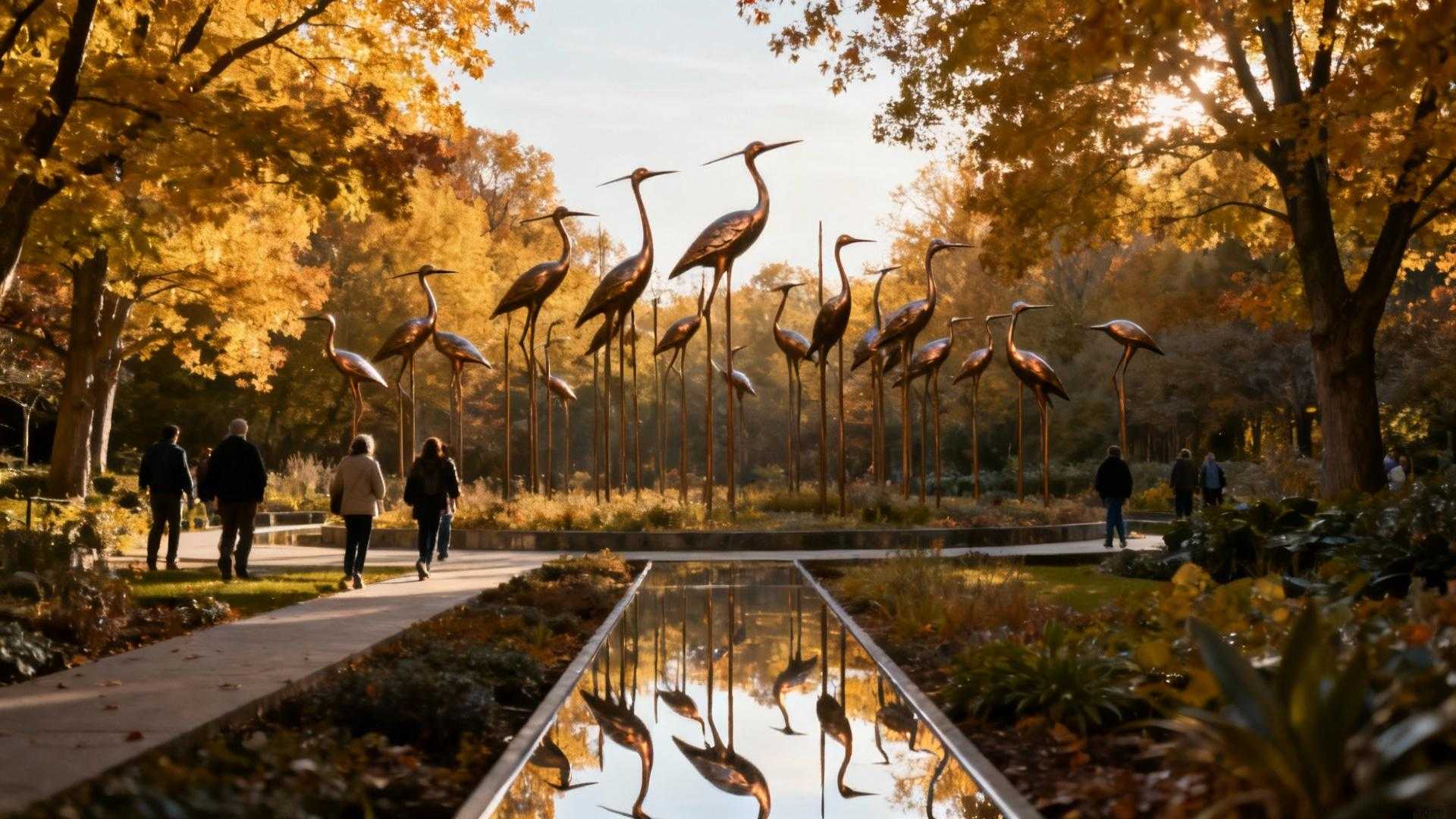Most travelers chase famous monuments and crowded tourist sites, but I discovered something extraordinary hidden in Aurora, Colorado that transforms how we understand memorial tourism. The 7/20 Memorial stands as the only American memorial where 83 individual cranes carry healing messages from families, creating a completely unique approach to community remembrance that exists nowhere else in the world.
This isn’t your typical memorial experience. While other sites focus on the tragedy itself, Aurora’s memorial artist Douwe Blumberg designed something revolutionary: a living sculpture that changes with every visit, where each crane contains personal tokens from survivors, first responders, and loved ones.
Located at Aurora Municipal Center’s Water-wise Reflection Garden, this memorial represents the only place where commemorative art actively promotes healing rather than dwelling on loss. The 13 uppermost cranes feature translucent wings that glow in sunlight, while 70 white cranes represent those injured, all converging and rising skyward in a powerful symbol of community resilience.
The exclusive memorial design that exists nowhere else
Why 83 cranes create an unrepeatable experience
The memorial’s genius lies in its spatial dynamics across 2,500 square feet. Unlike static monuments, every viewing angle creates a different emotional experience, with cranes positioned to interact with natural light throughout the day. The foundation describes it as getting “a different feeling” each time you visit, making this the only memorial designed for repeated contemplation and discovery.
The artist’s revolutionary approach to tragedy commemoration
Selected from over 150 international submissions, Blumberg deliberately avoided focusing on the shooting itself. Instead, he created what he calls a “beacon of light” that emphasizes what happened since that night. Each crane contains canisters filled with community remembrance tokens, transforming grief into a repository of shared healing that no other memorial matches.
What makes this memorial tourism experience incomparable
The community integration model other cities study
Aurora’s 7/20 Memorial Foundation has become a resource for other tragedy-affected communities, with representatives from San Bernardino, Marjory Stoneman Douglas, Virginia Tech, and Columbine attending the dedication. This memorial creates the only model where local healing extends to supporting other communities globally, making it a pilgrimage site for understanding trauma recovery.
The healing philosophy that redefines memorial purpose
While traditional memorials preserve memory, Aurora’s approach actively promotes transformation. The memorial tourism model parallels New Zealand’s mining safety transformation, but Aurora’s community-centered healing creates an entirely unique visitor experience focused on hope rather than remembrance alone.
The exclusive cultural elements only Aurora provides
Location advantages no other memorial offers
Positioned within the Municipal Center near the original theater site, this memorial creates what foundation leaders call a “positive landmark” that outshines the tragedy location. Visitors can access daily civic life integration while experiencing profound commemorative art, a combination unavailable at isolated memorial sites.
The artistic inspiration story behind the design
The cranes originated from “1000 Cranes for Aurora” sent by O’Fallon, Missouri residents in 2012, transformed by Blumberg into permanent metal sculptures. This community-to-community gesture becoming monumental art represents the only memorial where distant solidarity became local healing architecture, creating an unmatched narrative of national compassion.
Planning your meaningful Aurora memorial experience
When to visit for optimal reflection and discovery
Colorado’s mild autumn weather makes September through October ideal for memorial contemplation, with translucent crane wings creating spectacular light effects during shorter days. The reflection garden’s seasonal changes enhance the living memorial concept, while nearby architectural marvels demonstrate different approaches to commemorative design.
Combining memorial tourism with Aurora’s cultural renaissance
Aurora’s Cultural Arts District provides context for understanding how communities transform tragedy into creative resilience. The memorial connects naturally with local healing arts initiatives, creating a comprehensive experience of community recovery that parallels international memorial tourism approaches while maintaining its unique American perspective on healing.
The 7/20 Memorial proves that commemorative tourism can inspire rather than simply remember. Aurora’s revolutionary approach to community healing through art creates an experience available nowhere else, where 83 cranes carry not just memory, but active hope for visitors seeking meaningful travel that transforms perspective on tragedy, resilience, and the power of community care in healing impossible wounds.
